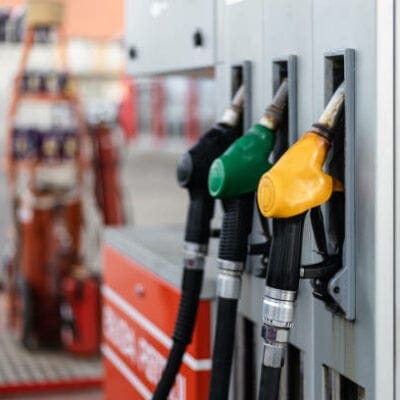
California towns are banning new gas stations. Big Oil is paying attention.
By Kate Yoder, Grist
“This story was originally published by Grist. Sign up for Grist’s weekly newsletter here.”
When oil and gas companies attack a climate campaign, activists usually focus on the obvious negative: One of the world’s biggest industries, with its wealth of resources, is trying to quash their efforts to, for instance, ban natural gas in buildings.
But in Northern California, where grassroots activists have succeeded in getting towns across Napa and Sonoma counties to prohibit new gas stations, some consider the emerging backlash a sign of validation.
The news of Big Oil’s opposition came to Jim Wilson in late January. The longtime climate activist in Napa County found a flyer in his mailbox one day with a picture of a gas nozzle next to an empty wallet, along with the message “Banning gas stations = higher gas prices.” The mailer, sponsored by the Western States Petroleum Association, the West Coast’s oil industry trade group, warns that efforts to limit new gas stations could lead to less competition and increased costs for the drivers of gas-powered cars.
“I believe that Napa County is the first in the U.S. to have all of the municipalities ban new gas stations,” Wilson said. “And so maybe we’ve rocked the boat.”
As the urgency of addressing climate change grows across the United States, one unprecedented heat wave and flood at a time, cities are finding ways to cut fossil fuels out of their future. But any action that has meaningful consequences, whether it’s an electrification ordinance in Seattle or a prohibition on new gas stations in California, is bound to grab the attention of the powerful industries it hurts.
Wilson, with 350 Bay Area and Napa Climate Now, advises climate activism efforts for local teenagers, who have led the push to prohibit new gas stations in the area. Liliana Karesh, a junior at Napa High School and a co-president of Napa Schools for Climate Action, said her group has reached out to government officials, participated in public comments, and presented to city councils to get their message across. “We’re in such a state of climate emergency, yet our government continues to approve the building out of these fossil fuel infrastructures,” Karesh said.
The movement to prohibit new gas stations began in 2021 when Petaluma, California, in the neighboring Sonoma County, became the first town in the United States to prohibit new gas stations. From there, bans spread throughout Sonoma and Napa counties; the idea has also been proposed in Los Angeles, Sacramento, Eugene, Oregon, and north into Kelowna, Canada.
For a while, activists were puzzled why they weren’t seeing more opposition to their efforts, said Woody Hastings, an environmental activist in Sonoma County who helped form the Coalition Opposing New Gas Stations. He sees the flyer, along with a new bill introduced in the California State Senate that would limit gas station bans, as signs that the movement has gained enough traction to matter to opponents. “It’s really something,” Hastings said. “It tells us that the Western States Petroleum Association, which is big guns, cares about this.”
In recent years, California has seen catastrophic fires, unhealthy pollution from smoke, and wild swings between drought and heavy rain, all enhanced by climate change. Towns across Sonoma and Napa counties have declared a “climate emergency,” and activists see the prohibition of new gas stations as one way to follow through on those words.
The bans aren’t really aimed at reducing greenhouse gas emissions — it’s unclear what kind of effect they have on the climate — but rather ending investments in fossil fuel infrastructure. “We’ve been told it’s a silly thing to do because, you know, it doesn’t matter, because people will just be able to fill up at the existing gas stations,” Hastings said. But he says that residents aren’t clamoring for more gas stations, so local governments don’t need to spend staff time and resources approving and supporting what might soon turn into outdated infrastructure. California plans to phase out sales of gas-powered cars by 2035 and zero out its carbon emissions by 2045. Gas station developers, Hastings said, “are assuming that they’ll be able to sell gas just like they’ve been selling gas for 100 years.”
Activists also oppose gas stations for the same reason they would oppose the construction of any other pollution-spewing facility. Beneath every neighborhood station sit underground tanks storing thousands of gallons of gasoline and diesel. These tanks are the source of toxic vapors, vented aboveground through pipes. They’re also famous for leaking, infusing the surrounding soil and groundwater with a host of contaminants. Nearly all underground storage tanks eventually leak, and the cost of cleaning up a single site can top $1 million. Gas stations account for nearly half of the country’s 450,000 contaminated brownfields, sites where the presence of hazardous substances make them difficult to redevelop.
For the oil industry, gas stations are crucial: They’re the end of a long supply chain that starts in the oil fields and ends with people filling up their vehicles. “We’re paying attention across the state where these types of bans are being proposed,” said Kevin Slagle, a spokesperson for the Western States Petroleum Association. He believes the prohibition on new gas stations in parts of California are “a mix of symbolic bans and bans that really would limit fuel supplies in the community.”
Slagle said that restricting the supply of gas stations would lead to increased costs for consumers. For support, the trade group’s flyer points to a working study from University of California, Berkeley, not yet peer-reviewed, in which economists studied more than 1,000 stations in Mexico and found that adding nearby gas stations led to slightly lower gasoline prices. The flyer is part of the industry’s “Facts Per Gallon” campaign that launched late last year to draw attention to how California policies, from its cap-and-trade program to low carbon fuel requirements, contribute to some of the highest gas prices in the country.
That same Berkeley study is also mentioned in the text of a bill introduced in late January by Aisha Wahab, a Democratic state senator representing the district east of the Bay Area. The bill, as written, calls for the California Energy Commission to conduct a study on gas stations and alternative fueling infrastructure, such as electric vehicle chargers. If enacted, it would block local governments from imposing bans starting in January 2025 and lasting until the study is completed, potentially as late as January 1, 2027.
A representative for Wahab told Grist that the original bill contained a “double negative” that was being fixed and said that the bill wouldn’t prevent moratoriums on gas stations, but did not provide further details. Since bills in California can’t be amended for 30 days after they’re introduced, the official text can’t be changed until February 29, according to the state Senate office.
In the meantime, the bans are already having an effect. “We have seen projects in Napa County stranded, and applicants for new gas stations strongly discouraged, because of [Napa] Schools for Climate Action’s work and success,” Wilson said. “This industry must be furious about the progress that children are making in trying to describe their vision for a fossil-free future.”
This article originally appeared in Grist at https://grist.org/cities/california-cities-ban-new-gas-stations-big-oil-backlash/.
Grist is a nonprofit, independent media organization dedicated to telling stories of climate solutions and a just future. Learn more at Grist.org

